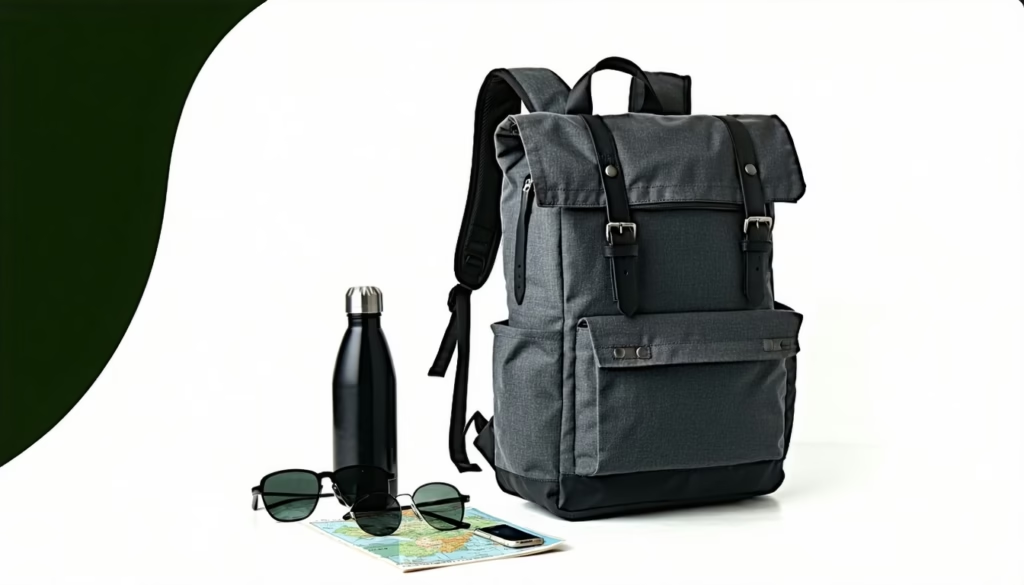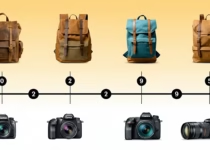Choosing Weekender Backpacks With Built-In Charger Ports

We’ve all been there, scrambling to find a charger port while our gadgets gasped for power mid-trip. A weekender backpack charger built right into your gear solves that hassle, keeping your phone and laptop topped up on the go. In this guide, we’ll walk you through everything we’ve learned about integrated power packs, USB ports, and handy backpack features—so you can pick the best pack for your next getaway.
Here’s what you’ll get: clear tips on port types, battery capacity, placement, comfort, materials, and budget. By the end, we promise you’ll feel confident choosing a travel backpack that charges your devices as efficiently as your flight.
Understand Charger Port Types
Choosing the right port type is step one in finding a smart travel companion. Here’s the thing, USB-A and USB-C aren’t just labels—they dictate charging speed and compatibility.
USB-A vs USB-C Ports
USB-A is the classic, wide rectangle you’ve seen on desktops and older power banks. It usually outputs 5V at up to 2.4A, which is fine for phones and small devices. USB-C (the oval connector) can handle power delivery (PD), often up to 60W, so you can even trickle-charge laptops or tablets.
| Port Type | Max Power Output | Device Compatibility |
|---|---|---|
| USB-A | 5V at 2.4A | Older phones, small gadgets |
| USB-C | 5V–20V at 3A–5A* | New laptops, tablets, phones |
*Actual power delivery varies by model and cable quality.
Integrated Power Bank Features
Not all built-in batteries are created equal. We look for packs with:
- A high-quality lithium-ion cell rated to last ≥500 cycles
- Pass-through charging (so you can top up both backpack and device)
- Short-circuit protection and auto-shutoff
If you want more on gadget-friendly gear, check our deep dive on tech in weekender backpack and see why some favor a usb weekender backpack for daily commutes.
Evaluate Power Bank Capacity
Battery size, expressed in milliamp hours (mAh), directly impacts how many recharges you can get. Let’s break it down.
Choosing The Right mAh
A 10 000 mAh pack can give your smartphone 2–3 full charges, whereas a 20 000 mAh cell might handle a phone and tablet combo. Here’s a quick ballpark:
- 5 000 mAh: 1 smartphone charge
- 10 000 mAh: 2–3 smartphone charges
- 20 000 mAh: 1 smartphone plus 1 tablet
Remember, higher mAh means extra weight, so check weekender backpack weight advice before you buy.
Charging Speeds Explained
Beyond capacity, charging rate matters. Look for:
- Quick Charge (QC) 3.0 or higher for Android devices
- Power Delivery (PD) for laptops and newer phones
- Multiple ports with shared vs dedicated output
If you often juggle gadgets, a dual-port design with one QC port and one PD port keeps everyone happy.
Compare Port Placement Options
Where the charger port lives on your pack affects convenience—and security.
External Quick Access Pockets
Some backpacks place ports on the shoulder strap or side panel. That means you can plug in your phone without opening the main compartment. It’s ideal when you’re on public transit.
Advantages:
- Easy reach without unpacking
- Cable stays put, reducing wear
Hidden Versus Visible Ports
Other models tuck the port under a flap or inside a slim pocket. It’s a choice between stealth and speed. Hidden ports help deter pickpockets, but you’ll spend an extra second flipping a cover.
Pro tip: Many hidden designs use a hidden pocket backpack style, blending safety with clean lines.
Assess Backpack Organization
A weekender backpack charger is only as good as your packing strategy. We look for smart compartments that keep tech neat and cables untangled.
Laptop And Tech Compartments
Aim for a padded sleeve that fits your laptop or tablet snugly. Bonus points for an anti-scratch lining. Some bags even include a dedicated spot for e-readers or power bricks.
Cable Management Solutions
Elastic loops, zippered mesh pouches, and Velcro straps help us avoid the “tangled cord jungle.” We often add packing cubes in backpack to keep chargers, cables, and adapters in their own zone.
Consider Comfort And Support
A high-capacity battery adds weight, so comfort matters. We test straps, back panels, and support features.
Strap Design And Padding
Thick, ventilated foam on the shoulder straps and back panel reduces sweat and strain. Look for an adjustable chest strap—similar to a sternum strap backpack—to keep the load balanced.
Weight Distribution Tips
Pack heavy items close to your back and low in the bag. If your power bank is removable, place it near the center for a stable carry. Even load helps keep shoulder fatigue at bay, especially when you’re dashing through airports.
Choose Materials And Durability
Your backpack should stand up to weather, abrasion, and decades of adventures.
Waterproof And Weather Resistance
Waterproof fabrics and sealed zippers keep rain out of your electronics. If moisture is a recurring worry, compare against our waterproof weekender backpack recommendations.
Fabric Types Comparison
Canvas, leather, nylon—each has pros and cons. Here’s a quick peek:
- Canvas: Rugged, eco-friendly but heavier
- Leather: Premium look, aging gracefully but needs care
- Nylon: Lightweight, water-resistant but prone to snags
For a full breakdown, see canvas vs leather vs nylon backpack.
Factor Price And Warranty
Built-in charger packs add cost, but you can find options at every budget.
Budget To Premium Ranges
- Under $75: Basic USB-A ports, 5 000–10 000 mAh, minimal padding
- $75–$150: Mixed ports, 10 000–20 000 mAh, better organization
- Over $150: High-output USB-C PD, 20 000 mAh+, premium materials
If you’re watching costs, check our affordable weekender backpack roundup for solid picks under $80.
Warranty And Customer Support
Our top brands back their gear with 2–5 year warranties. Look for hassle-free return policies and responsive customer service. A solid warranty often signals confidence in build quality.
Frequently Asked Questions
-
How long does a built-in backpack charger last on a trip?
It depends on capacity and device use. A 10 000 mAh bank can charge a phone 2–3 times. -
Can I replace the power bank if it wears out?
Many bags offer removable batteries. Check product specs to confirm. -
Are internal chargers TSA-approved?
Yes, most built-in batteries under 100 Wh pass TSA rules. -
Do backpack chargers affect airline carry-on status?
No, but always carry batteries in your cabin baggage. For carry-on guidelines see carry-on weekender. -
Is a USB-C port worth extra cost?
Definitely, if you need to top off laptops or faster phone charging. -
How heavy are backpacks with built-in batteries?
Expect an extra 0.5–1.5 pounds, depending on mAh. Proper strap padding helps offset that weight. -
Can I charge the backpack while I charge my device?
Look for pass-through charging support in the specs. It lets you power both at once.
Final Thoughts And Tips
Choosing a weekender backpack with an integrated charger port lets us travel lighter and power up smarter. By matching port types, battery size, placement, and comfort features to our needs, we turn a simple bag into a trusty travel sidekick.
Ready to upgrade your carry? Keep our checklist in mind—then pack up, plug in, and hit the road with confidence.


